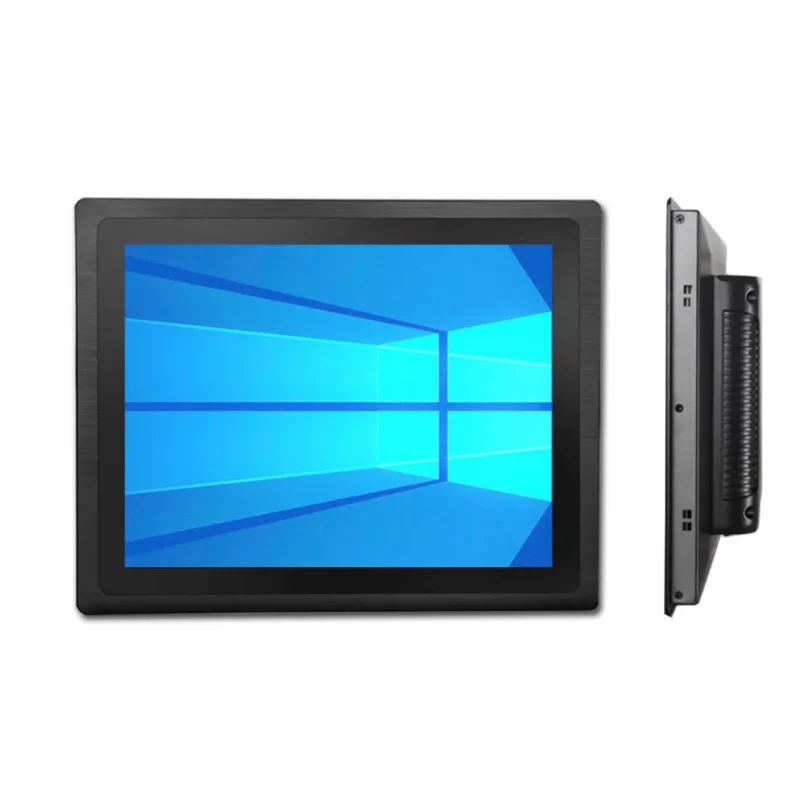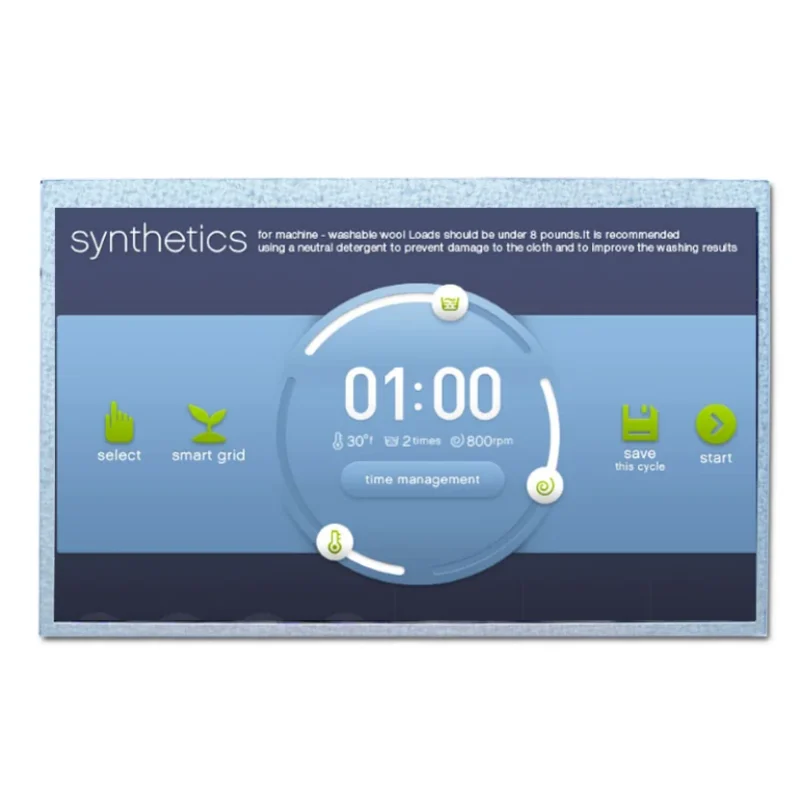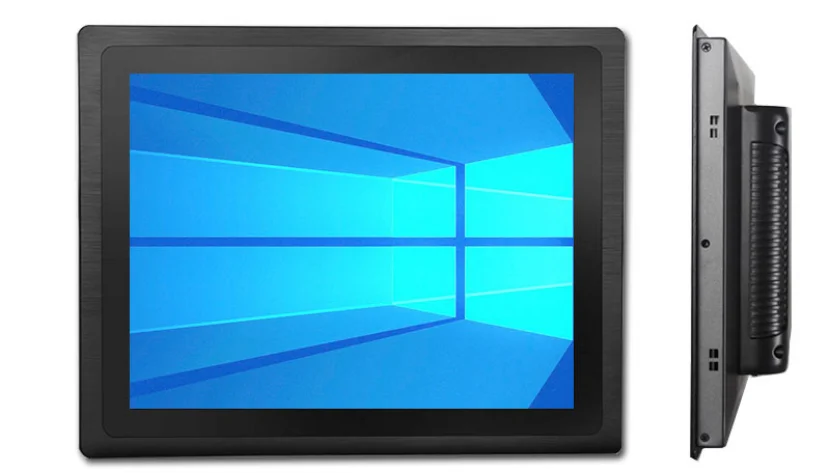When choosing a screen for your device or app, two of the most common ones you will find are LCD (Liquid Crystal Display) and IPS LCD (In-Plane Switching Liquid Crystal Display). Although both make use of liquid crystal technology, both of these have numerous advantages and disadvantages and thus one would be more appropriate to certain needs.
Learning about LCD (Liquid Crystal Display)
How LCD Works
LCDs control light with the help of liquid crystals, which are solid and liquid in nature. Liquid crystals are kept between two polarizing filters. Electricity is conducted through, wherein the molecular structure orientation of the liquid crystal varies and polarizes light passing through in different ways. The light for every pixel is controlled individually to show images and text. In black-and-white LCDs, the current-carrying pixels are white and the pixels blocked are black.
Main constituents of an LCD
·Backlight: Provides the illumination to the display. Cold-cathode fluorescent lamps (CCFLs) were used in early LCDs, but LED is used today because they use less energy, have a longer lifespan, and provide a superior quality of colors.
·Liquid Crystal Layer: The hub of the LCD, where the molecules twist in order to stop or permit the light when there is an electric field established.
·Color Filter: Used to produce color images by overlaying red, green, and blue sub-pixels, which each permit light of the same hue. They are used to produce lots of colors.
LCD Panel Types (TN, VA, etc.)
·Twisted Nematic (TN): Used by computer gamers nowadays because they allow high response times. They have poor viewing angles, which cause color washout and contrast off-center.
·Vertical Alignment (VA): Offer more contrast and blacks than TN panels, hence ideal for high-contrast materials like videos. But their response times are horrible as well.
LCD Advantages
·Low Cost: LCDs are inexpensive, thus easily affordable to budget-conscious buyers.
·High Resolution: New LCDs have high-value resolutions like 4K and 8K, ideal for clear images, watching videos, and games.
·High Brightness: LCDs are capable of producing high brightness images, hence perfect to be installed in light-colored rooms.
2.5 Disadvantages of LCD
·Poor Viewing Angles: TN panels in particular have poor viewing angles, in which off-center contrast and color are poor.
·Relatively Low Contrast: LCDs are comparatively lower in contrast than OLEDs, hence lower deeper blacks and lower dynamic range.
·Color Shift: Colors change when the screen is looked at from highly acute angles, thus leading to color inaccuracy.
Now, let’s move to information about IPS LCD (In-Plane Switching Liquid Crystal Display)
Fundamentals of IPS technology
IPS technology provides better watching because it makes it possible for molecules of liquid crystals to become oriented horizontally. Molecules are made to slant in a horizontal direction when an electric field is applied, with increased control of the light and more accurate colors to be presented. It displays natural, clear images, like gentle gradations of color.
3.2 IPS Structural Differentiations from Conventional LCD
While in typical LCDs the liquid crystals are twisted, IPS LCD molecules are maintained horizontal and move in the same plane. Such a structural alteration enhances color homogeneity and precision further, particularly with broader viewing angles, and requires a higher-order electrode structure on IPS panels.
3.3 IPS LCD advantages
·Broad Angles of View IPS Panels: IPS panels provide as much as 178-degree view angles with no loss in color and contrast, and thus are most appropriate for multi-user display application. ·Realistic Color Reproduction: IPS LCDs provide realistic color replication, and thus are most appropriate for video editing, image processing, and graphic designing.
·Quick Response Time: IPS LCDs have quicker response times, minimizing video game motion blur and fast video.
·Efficiency in Power: IPS panels feature power-conserving LED backlighting, maintaining maximum battery life for handsets.
3.4 Disadvantages of IPS LCD
·Expensive: The high-tech manufacturing process also makes IPS panels more expensive than any other form of LCD display.
·Backlight Bleed: Lightly weak bleeding light on edges in some IPS LCDs, particularly at night, although the newly emerged production methods have minimized its occurrence.
Head-to-Head Comparison: LCD vs. IPS LCD
Comparison: Color Accurancy and Gamut
IPS LCDs have superior color accuracy with over 99% sRGB color space coverage and must be used best where color accuracy is paramount. Ordinary LCDs provide 70-80% sRGB coverage, i.e., substandard colors.
4.2 Close-up Viewing Angles
IPS LCDs have enhanced viewing angles with consistent image quality over a wide range of viewing angles. TN panels have color shift and contrast loss on off-axis view.
4.3 Response Time and Motion Blur
TN panels were never behind in response times, but IPS LCDs are now catching up. 4-5ms response times of IPS screens reduce motion blur and are best suited for video games and action movies.
4.4 Contrast Ratio: Blacks and Whites
VA panels also generate contrast ratios with blacks of increased depth, but IPS monitors sacrifice good contrast of resolution in favor of good color and good wide viewing angles adequate for the majority.
4.5 Power Consumption
LCD and IPS LCD both have power-saving LED backlights. IPS panels are more frugal still, however, by their conservative use of backlight, a variation which is often very evident in smartphones.
In brief, standard LCDs are cheap and good enough for general use, but IPS LCDs offer better color accuracy, wider angle of view, and overall processing for demanding tasks such as professional graphics and video games. Nevertheless, the increased cost and potential backlight bleeding remain a drawback for most.
Displaysell’s Products in LCD and IPS LCD
Display Overview at Displaysell
Displaysell is a successful enterprise in the display technology industry, handling all types of enhanced LCD and IPS LCD products. Called the innovative business that pleases customers, Displaysell is distributed to a huge range of markets, ranging from industries to consumer goods. Their engineers ensure all products are in their optimum performance, providing solutions to corporations and individuals alike.
5.2 Popular LCD Displays

Displaysell 10.1-inch industrial LCD display possesses resolution 1280×800, and it is highly appropriate for industrial control equipment and some medical equipment. It is durable, having clear images and touch availability, making it appropriate for application in pressurized conditions.
5.3 Improved IPS LCD Screens
Displaysell’s 10.1-inch IPS LCD screen supports a resolution of 1024×600 with the help of LVDS technology to transfer data with utmost ease. As the screen has wide viewing angles (178 degrees) and true color representation, it is best suited for applications like graphic designing and video editing where color accuracy and reduced motion blur are most critical.

Why Displaysell’s Displays
Displaysell products are of high quality due to uncompromising quality control. They remain up to date in display technology by utilizing energy-saving backlighting and more advanced liquid crystal material. Moreover, they also have customization solutions to cater to customers’ own individual needs, and their specialist after-sales service maintains customer confidence
Conclusion
LCDs are less expensive but can exhibit smaller viewing angles and color inconstancy, especially with TN panels. IPS LCDs have more accurate colors and higher viewing angles but cost more and suffer from backlight bleeding in some conditions.
For improved display options, see Displaysell’s collection of LCD and IPS LCD monitors. Displaysell’s attention to quality, innovation, and customer care shines through with the guarantee that you receive the best monitor for your needs. Talk to Displaysell to discover more about potential personalizations, product information, and after-sale care.
